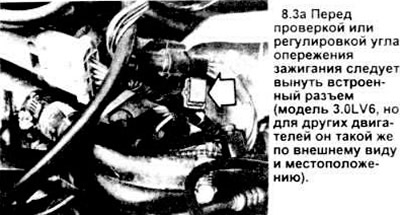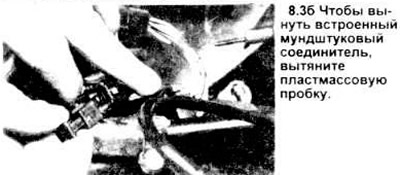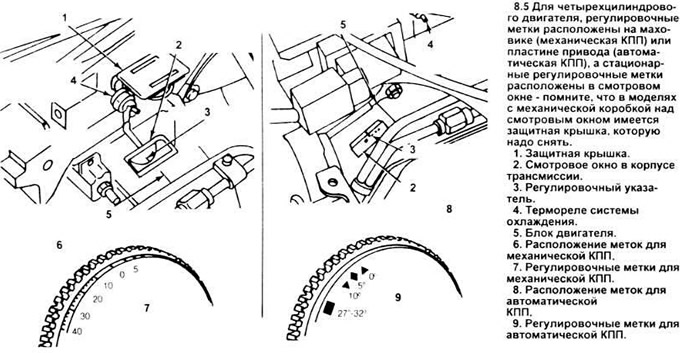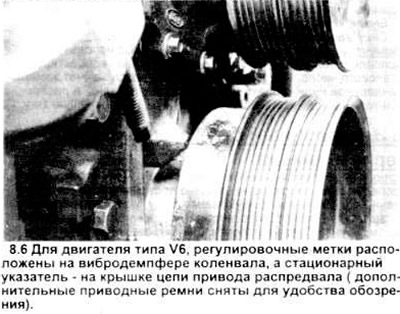2. Start and warm up the engine to operating temperature.
3. Pull out the built-in connector located next to the distributor.


4. Connect the induction stroboscope and tachometer according to the manufacturer's instructions.
Caution: Make sure the strobe and tach wires are at a safe distance from the fan blades.
5. For a four-cylinder engine, locate the inspection window on top of the transmission case, just below the thermostat housing at the left end of the cylinder head (see picture). If the car has a manual transmission, unscrew the screws and remove the protective plate.

6. For a V6 engine, find the adjustment marks on the crankshaft vibration damper (see picture).

Note: It may be necessary to clean the damper end with a wire brush or solvent.
7. Start the engine again.
8. For a four-cylinder engine, point the strobe through the window at the flywheel (Manual Transmission) or drive plate (Automatic transmission) and mark those whether the adjusting mark matches (10 degrees on manual transmission vehicles or triangular imprint on automatic transmission vehicles) with an adjusting pointer at the end of the adjusting groove.
9. For the V6 engine, aim the strobe at the vibration damper adjustment marks and note if the 10 percent mark aligns with the stationary pointer on the camshaft timing chain cover.
10. If the label does not match the stationary pointer, loosen the lower bolt - the distributor holder. Turn the distributor clockwise (to reduce the lead angle) or counterclockwise (to increase the lead angle) until the correct adjustment mark on the flywheel/drive plate aligns with the stationary pointer. After matching the adjustment marks, securely tighten the lower holder bolt and then recheck the position of the marks.
11. Turn off the engine.
12. Insert the mouthpiece connector.
13. Start the engine again and check the idle speed. Since the engine is equipped with an automatic idle speed control system, the engine speed is not adjustable. If the measured RPM is not within the allowable range (see VECI label). Adjustment requires specialized test equipment and operations that are beyond the scope of this publication.
14. Turn off the engine.
15. Remove the stroboscope and tachometer.
Note: all Tauras / Sable models use distributors with a characteristic feature - octane number adjustment. The adjustment is made by replacing the standard zero - degree thrust located in the distributor with a three or six degree delay thrust.
Visitor comments